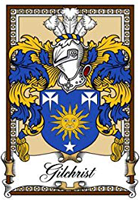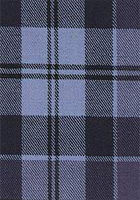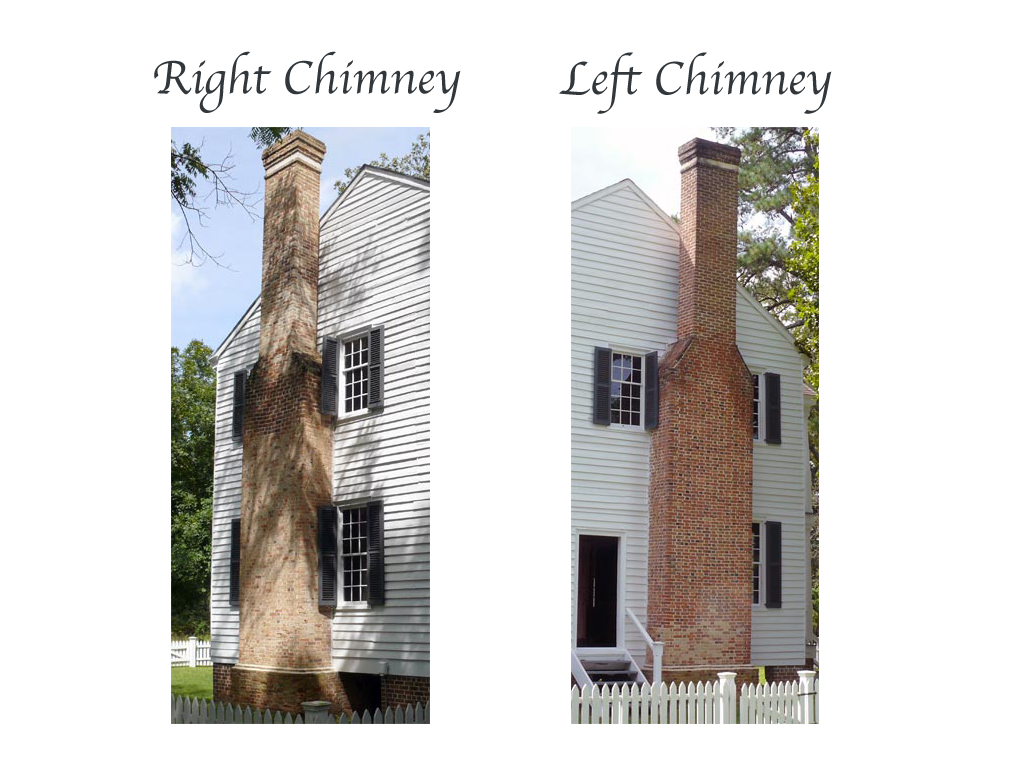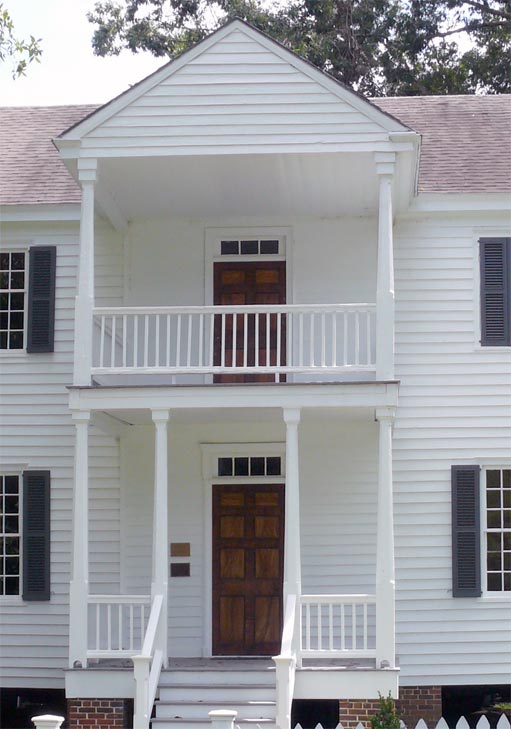Welcome to the Mill Prong House
Built by John Gilchrist in 1795
Mill Prong House is located at 3062 Edinburg Road, Red Springs, NC, 28377



The two large chimneys are slightly different in appearance, although they were probably constructed at the same time, perhaps by different masons. The chimneys are light-colored, handmade brick laid in a Flemish bond pattern. Flemish bond is a method of laying bricks using one long brick and then one header. The same type bricks were used to construct the fireplaces and piers underneath the house. In the restoration, all the piers underneath the house, except one, were removed and replaced with new brick. While the brick piers were bring replaced, the house was held up by jacks. The handmade brick from the piers was used to repair the chimneys. Archibald McEachern (1788-1873) purchased Mill Prong House and land in 1834. The house and land remained in his family until 1978, when an heir, Lida Bullock of Red Springs, granted a long-term lease of the house and 2.86 acres to Mill Prong Preservation, Incorporated. After her death, her children conveyed full ownership to Mill Prong Preservation, Incorporated. The restoration of Mill Prong House was completed in 1993. The two large chimneys are slightly different in appearance, although they were probably constructed at the same time, perhaps by different masons.

Mill Prong House Tour begins at the front entrance, which has a fine, double-story porch, strongly Federal in design. The entrance is flanked by reeded pilasters or pillars. The tall, eight-paneled door on the first floor is wood grain on the outside and inside. The porch columns are solid timbers, square in section at the top and bottom, changing to octagonal forms below. The bases of the columns on the first story have channels cut through them so that water will drain from the porch deck. This way the porch columns have lasted more than 200 years without replacement. During the course of restoration the corner columns on the porch were found to be two stories in height. In other words, the corner columns extend from the floor of the first-floor porch to the ceiling of the second-story porch. The porch railings are molded and fit into the columns through the mortices. In addition to morticing, the top and bottom rails are held in place with small wooden pegs. The siding on the house under the porch is flush (even) while the weather boarding not under the porch is lapped. The heavy exterior shutters were made of cypress. Replicas were constructed of cypress using a surviving shutter as model. It is believed that John Gilchrist (1740-1802) built Mill Prong House between 1794 and 1802 almost exactly in the middle of a tract of 800 acres of land he acquired in 1794. At the time of his death, he owned some 2,500 acres of land surrounding Mill Prong House.